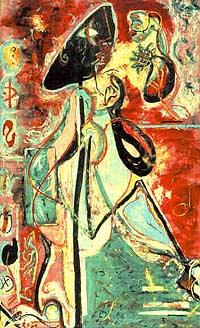For more than three years, the most famous gorilla in Boston has kept a low profile, spending his days away from the public eye, painting, watching “Nova” documentaries, and learning to help his trainers care for him.
But in less than two weeks, when the new gorilla exhibit opens at the Franklin Park Zoo, Little Joe will once again bask in his celebrity status, accepting visitors for the first time since he launched headlines around the world for his daring escape from the zoo. Officials, who considered getting rid of Little Joe and another young male gorilla, Okpara , or Okie, after the escape, decided to build a $2.3 million steel-enforced gorilla habitat designed to keep the most rambunctious primates from breaking free. The new exhibit gives the gorillas, seven in all, more room to play, with steel-reinforced “trees” — the animals would tear apart real ones — and ropes for swinging.
“I think they’ll thrive on it,” said John Linehan , president of Zoo New England , the corporate entity that oversees the zoo. “Joe has historically been a bit of a showoff.”
The new habitat, which opens to the public Feb. 17, also reflects changing standards in zoos, where a host of gorillas have escaped in recent years. The earliest zoos housed animals in cages, but as those were considered inhumane, many zoos began building habitats designed to mimic the natural world. Like the Franklin Park gorilla exhibit, many relied on high walls and moats to keep the animals from escaping.
But the exhibits with more open terrain encouraged the gorillas to explore, and push against, their boundaries, said Nevin Lash , owner of Ursa International in Atlanta, the firm that helped design Franklin Park’s new gorilla exhibit. Officials also underestimated the strength and flexibility of some of the gorillas. Soon they began to set themselves free, in Dallas, St. Paul, Atlanta, Pittsburgh and Boston, sometimes injuring bystanders.
“I think the gorillas that are born in more naturalistic exhibits tend to be more strong, and more capable of extending their reach,” Lash said. “Modifications are being made at different zoos to counteract these more athletic gorillas.”
Franklin Park officials toured a half-dozen other gorilla and orangutan habitats before deciding to extensively remodel the zoo’s gorilla exhibit so it is completely contained, by steel mesh across the ceiling and by glass, concrete, and steel along the sides. The moats were filled in and more vertical space, with climbing structures, was added, increasing the exhibit space by 75 percent . Bark mulch will also cover the cement areas.
Where there was once one window viewing area, now there are five. “The gorillas enjoyed that as well,” Linehan said. “Sometimes they’d jockey for position at the glass.”Continued…
Crevices for hiding bits of food were deliberately built into the new habitat to encourage foraging by the animals. “What we don’t want to do is put dinner on a TV tray and say, ‘Hand me the tray back when you’re finished,’ ” said Marshall Judges , the zoo’s executive vice president for operations, who is overseeing the project.
The work was difficult because the exhibit was built inside an existing building. Officials rejected cutting a hole in the Tropical Forest’s roof, fearing it would allow too much heat in the 60-plus-degree environment to escape. That meant workers couldn’t use cranes to bring in the long, steel beams; instead, they had to be maneuvered through doors and hoisted upright.
Little Joe first broke out in August 2003 but was quickly recaptured. Six weeks later, he climbed over the wall of the gorilla exhibit and fled the pavilion, attacking an 18-year-old off-duty zoo worker and a toddler. He escaped from the zoo, running through Dorchester, until he was subdued with tranquilizer darts. Both the worker and the mother of the toddler filed lawsuits, which are still working their way through Suffolk Superior Court.
After Little Joe escaped, zoo officials began looking for other homes for Joe and Okie. The gorillas had always been temporary boarders at Franklin Park, where the two animals who had been raised by humans were placed to learn to socialize with other gorillas. After the escape, officials thought maybe it was time for the pair to move on.
“I certainly didn’t feel confident that given what had happened we could contain them,” Linehan said.
But none of the potential homes panned out. And officials began considering the idea of building a new, stronger, safer habitat for the animals. They raised the $2.3 million from private donors, state money, and revenue left over from the 2004 Democratic National Convention in Boston.
Joe is now 14 and has gained more than 100 pounds since his escape, weighing in now at an estimated 430 pounds. In their three years away from the public eye, he and Okie have been busy. They have learned to paint, although Okie’s much more enthusiastic than Joe, who doesn’t like getting the paint on his hands. Museum staff have been stockpiling Okie’s pieces of art for a possible show in the spring.
Trainers have also been teaching Little Joe the principles of animal husbandry. Traditionally, gorillas of his size must be shot with a tranquilizer dart so medicine can be administered or blood taken. That is stressful for the animals, who see the tranquilizer gun pointed at them and anticipate what will come next.
So at Franklin Park, trainers have taught Little Joe to press his shoulder against the mesh barrier and accept a shot, or raise his feet or hands for inspection.
“He’s probably got more personality than any other gorilla,” Linehan said. “He’s certainly one of the brightest I’ve ever met.”
Kathleen Burge can be reached at kburge@globe.com. 
© Copyright 2007 Globe Newspaper Company.


A great one. Starring Shannyn Sossamon.



 So far Shannyn is getting ahead in my count.
So far Shannyn is getting ahead in my count. 
 Google him. It’s an interesting read. I am currently
Google him. It’s an interesting read. I am currently  Adventurer Steve Fossett, his small plane missing over vast rugged territory
Adventurer Steve Fossett, his small plane missing over vast rugged territory









 , Forsberg21
, Forsberg21 
 . Ryoushi the Legal scholar neurologist (Cannuck-Asian); SheSeemsSweet the journalist and future publishing mogul (NYC-AfricanAmer.); Forsberg21 the student leader from Colo. (currently in Sweden-Asian); Very Italian, VeryModern (Denver) the leading Xanga horoscope personality and advice columnist (ElsaElsa); PretendPrincess Hmm, not so sure how to identify her except to say that she is a good interesting blogger and has a family (Kids)(Ohio); RedDirtGirl seems to be in on whats going on not only in Calgary, but what’s what in the world of celebrities. She shares opinions. Great choices, poor crafting of this blog due to being inept at getting links and pics up. Good idea I had a long time ago. [finally got pics/sans P.P.]
. Ryoushi the Legal scholar neurologist (Cannuck-Asian); SheSeemsSweet the journalist and future publishing mogul (NYC-AfricanAmer.); Forsberg21 the student leader from Colo. (currently in Sweden-Asian); Very Italian, VeryModern (Denver) the leading Xanga horoscope personality and advice columnist (ElsaElsa); PretendPrincess Hmm, not so sure how to identify her except to say that she is a good interesting blogger and has a family (Kids)(Ohio); RedDirtGirl seems to be in on whats going on not only in Calgary, but what’s what in the world of celebrities. She shares opinions. Great choices, poor crafting of this blog due to being inept at getting links and pics up. Good idea I had a long time ago. [finally got pics/sans P.P.]









 Manny’s famous grill for sale on e-bay. I think the high price was 1billion dollars by a teammate!
Manny’s famous grill for sale on e-bay. I think the high price was 1billion dollars by a teammate!
 That bear should be a Sox fan!
That bear should be a Sox fan!













 In court?
In court?


-the-key.jpg)

 (One of the disputed Jackson Pollack paintings included in the Matter collection.)
(One of the disputed Jackson Pollack paintings included in the Matter collection.)



















Recent Comments